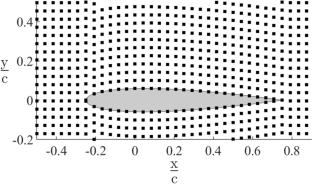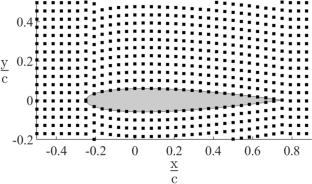Determination of aerodynamic forces using PIV velocity fields
Abstract
Traditional methods for directly measuring aerodynamic forces are particularly challenging at low Reynolds numbers due to the low dynamic pressures. This becomes even more challenging when rapid motions of the test articles are present, with inertial forces often larger than the aerodynamic forces. Existing methods for calculating pressure fields from experimental vector fields, such as those measured using particle image velocimetry (PIV), have constraints that make them difficult or impossible to apply to data sets that do not meet certain conditions, such as boundary condition requirements or restrictions on the grid shape of the data. This paper describes a new method of determining surface pressures and aerodynamic forces using experimentally collected velocity field data. This method leverages field erosion to constrain a point-stepping spatial integration of the pressure gradient field. A systematic method for dividing the flow field into zones based on the vorticity of the flow and the known geometry of the experiment allows for pressure in less-disturbed portions of the flow to be calculated and used as the boundary conditions for more unsteady flow regions. Surface pressures are then extracted from on or near the surface and integrated to calculate lift and drag. Two data sets are used as validation cases: a pitch-and-hold dynamic stall and static lift around an airfoil, both at low Reynolds number. The pressure-derived lift curves compare favorably with the reference data sets, demonstrating the accuracy of the new method.



 求助内容:
求助内容: 应助结果提醒方式:
应助结果提醒方式:


